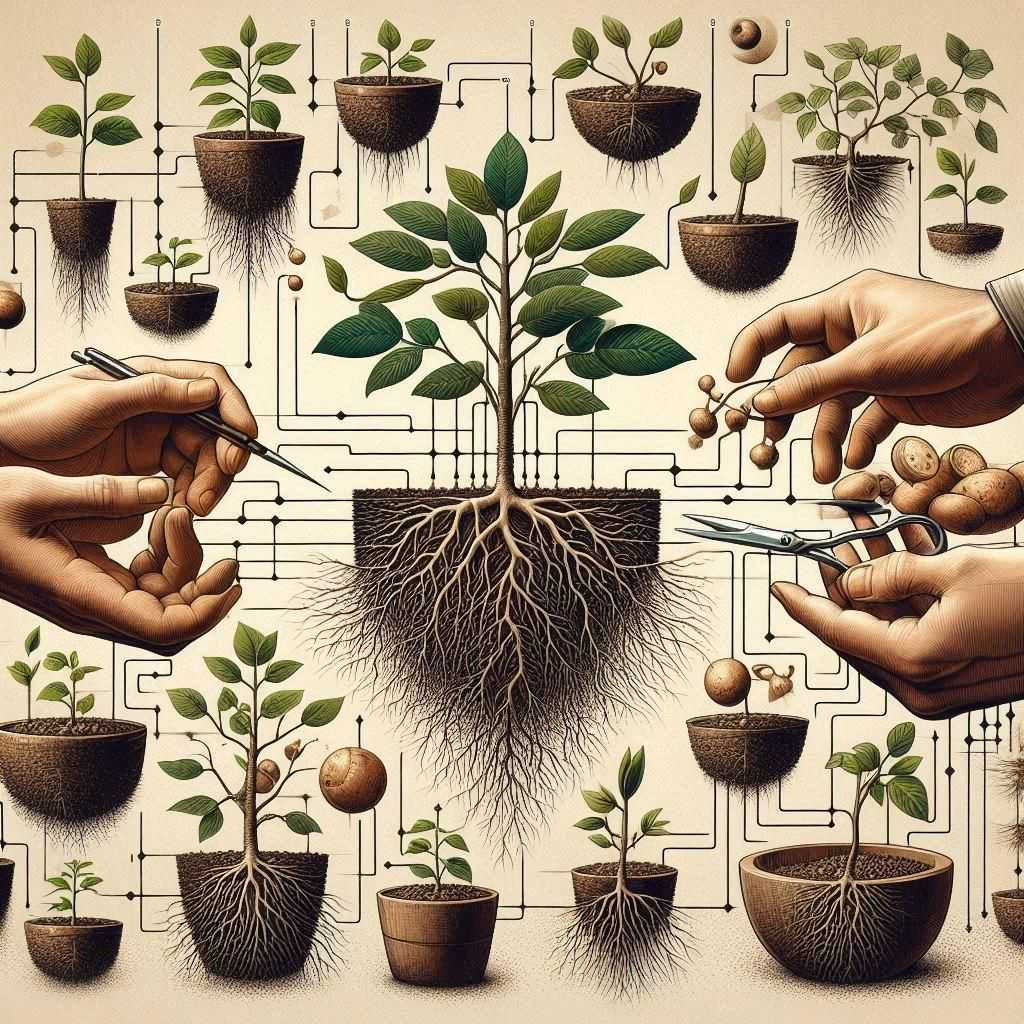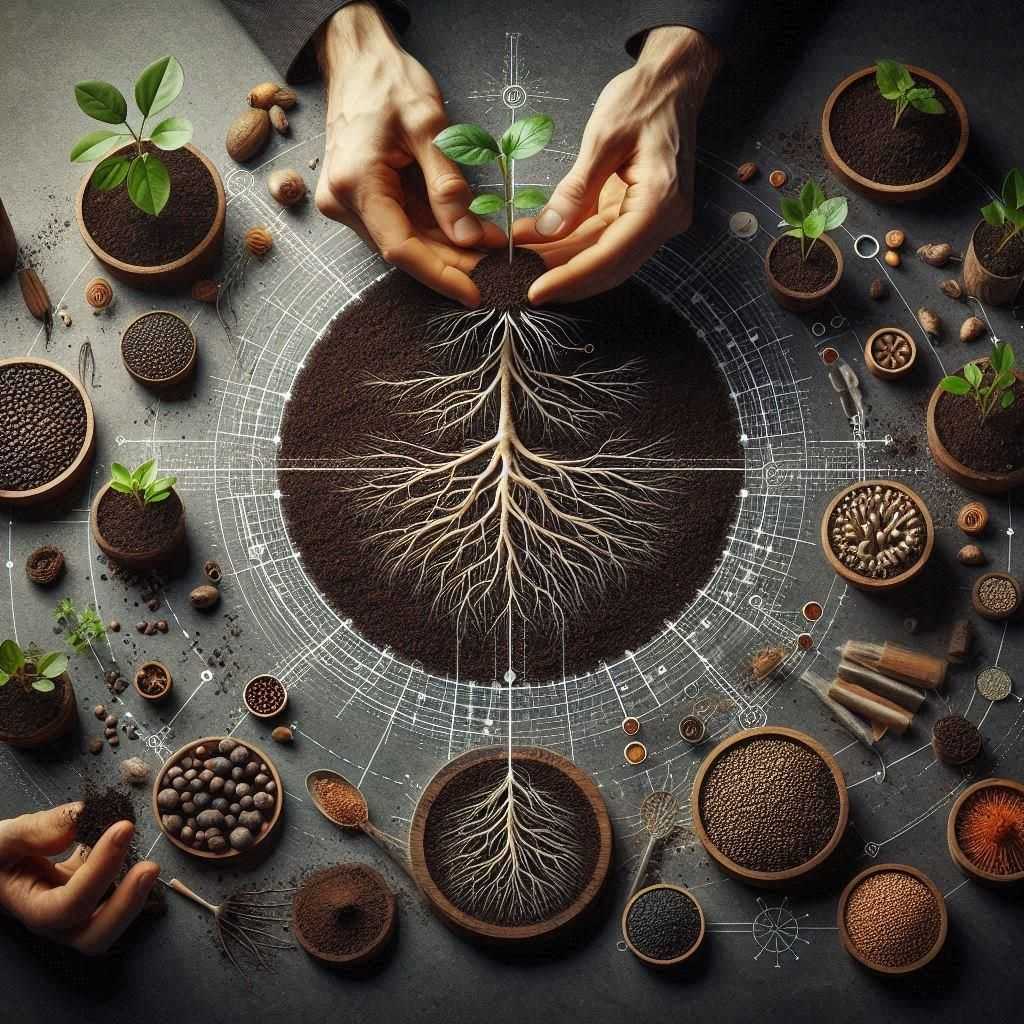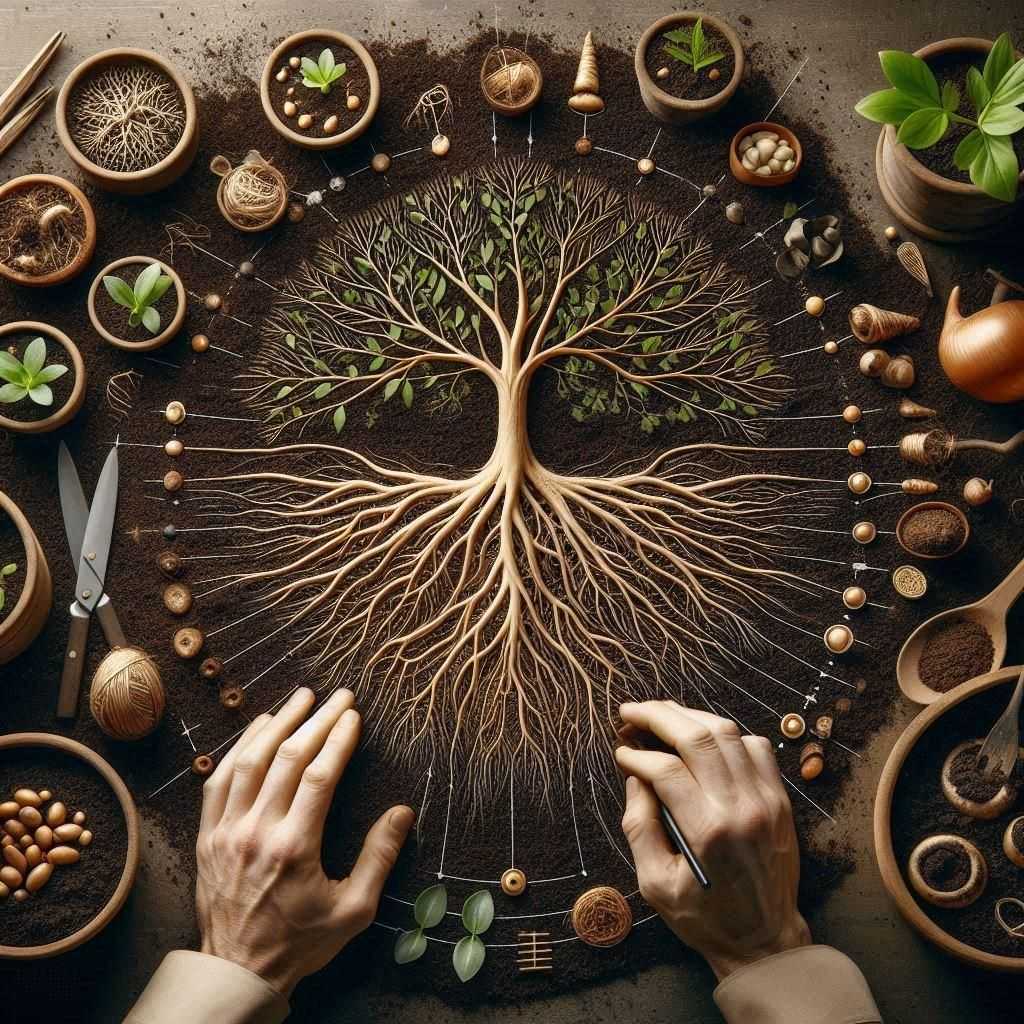Advertisement
A healthy plant has to have a strong root system, but it does not come easily! Developing rooting plants is not such a “basic” skill for gardeners or plant lovers who are looking to add more plants to their garden.
It requires a lot of skill, attention, and experience to do it correctly. The long-term health and robustness of your plants will depend on whether you propagate them through cuttings, seeds, or division that ensures strong root development.
To make sure your rooting process is conducted like an expert, here are some helpful tips for gardeners to follow.
undefined Using a root trainer
To help plants develop straight downward roots instead of wrapping around the edges, a root trainer is used. It is a special type of container that allows the plant to spread sideways, creating deeper root systems.
Grooves designed inside the root trainers direct the roots down. This prevents roots from circling around the container, as is the case in small pots. When they reach the base of the trainer, they find air. Roots cease growing when they come into contact with air.
This process is known as air pruning. Air pruning stimulates the growth of more roots in different areas, resulting in healthier root systems that thrive well in soil after transplanting. This makes it easy to transplant them without breaking their roots.

undefined Repotting your plants
You have to repot your plants when they become large and are at risk of being root-bound in small pots. A plant becomes root-bound when its roots circle the interior of the pot in search of nutrients but do not find new soil to grow in.
This limits the plant’s growth potential, although it may maintain its size if taken care of properly.
According to Penn State University, even trees can strangle themselves by becoming root-bound as roots wrap around the stem and trunk.
Therefore, transplant your plant to a slightly bigger pot once you notice that roots are coming out through drainage holes or wrapping around the pot.
Go for a slightly larger container when repotting. Add soil to the bottom and remove the plant gently from the old container to avoid injuring the roots.
Put it in a new pot and fill it around with soil until the desired level is reached. Care should be taken not to bury too much of the stem of the plant.
Loosening and aerating the soil before transplanting promotes healthier root development by increasing oxygen levels within the soil.
If your soil is heavy clay, which is prone to compaction, use a shovel to break up clumps and provide optimum conditions for your plants’ growth, especially.
In addition, you can improve your soil structure and health by adding compost, making sure that your plants will thrive well after repotting.

Advertisement
undefined Enhancing soil health for plant growth
Maintaining healthy roots and improving oxygen circulation require loosening and aerating the soil. Roots generally fail to penetrate hard surfaces because compacted soil restricts root growth.
Use a shovel to gently break up clumps and compacted soil in your garden for seedling preparation.
This easy measure allows roots to spread more easily into the ground, where they can get essential nutrients. Aeration enhances the process of transferring oxygen to the cells of the plants so that they can respire efficiently.
Root rot and reduced plant vigor can come about as a result of inadequate oxygen availability in compacted or waterlogged soils.
Although heavy clay soils are susceptible to this condition, you can ease compaction by introducing compost, hence organic matter, which will make it friable. Do not walk on it so that it remains loose over time and also remains well aerated.
By doing this, you will be creating an environment where the roots of plants have optimal growth, leading to stronger plants overall.
undefined Practice deep and less frequent watering.
Once you have transplanted the plant into the garden, it is imperative to water it correctly for its health. Soil that remains consistently wet can lack oxygen. It encourages conditions that can cause root rot, which is characterized by brown and mushy roots.
Regular watering results in shallow root systems since plants do not need to grow their roots deep down in order to obtain water. Instead, one should consider slow but deep watering. This will cause stronger development of the root system to allow them to stretch deeper into the soil.
By allowing the soil to dry out slightly between watering sessions, plants are actually being encouraged to develop large networks of roots. When there is less water available, roots naturally spread out horizontally and delve deeper in search of moisture.
Deep but infrequent watering is another alternative that promotes healthy root growth as well as enhancing the resilience of plants in drought conditions. This will result in more robust plants that are better suited to survive in their garden setting.

undefined Providing proper nutrition
Proper nutrition, coupled with adequate air and water, is required in plants for their growth and overall well-being. The first step is to conduct a soil test to determine the pH level and nutrient content.
It gives the gardener an idea of whether the growing environment needs adjustment or not. Most plants prefer slightly acidic to neutral soil ranging from 6.0 to 7.0 pH. For example, blueberries and azaleas require more acidic conditions between 4.5 and 5.5 PH.
If the soil is too acidic, increase the pH by applying lime, or decrease it using elemental sulfur if it is too alkaline. If the soil test results show nutrient deficiencies, use fertilizers that contain NPK (nitrogen, phosphorus, and potassium).
This can lead to leaf burn and other problems, such as when fertilization goes beyond the manufacturer's recommendations.
Also, consider how fast nutrients can be accessed by plants depending on the fertilizer type used due to different release rates.
It ensures that plants receive the best nutrients for vigorous growth and lively gardens, which in turn yield better productivity through maintaining a balance between nutrient application and soil requirements.
Advertisement





